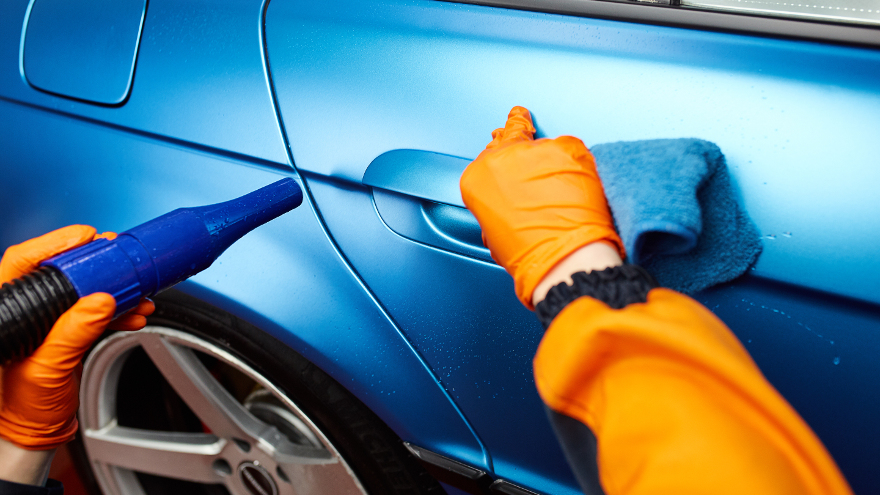COMMENTARY: 5 Answers to important questions about recon, used-car profits

The practice called rapid reconditioning to get vehicles from acquisition to the sales lot faster has caught the imagination of general managers and their reports.
When implemented and executed well, rapid reconditioning results in measurable step-by-step discipline, accountability and return on investment for dealers who pursue continuous improvement.
As rapid reconditioning brings new recognition of the recon process as a profit-generating department and no longer a necessary expense for a dealership’s sale of used cars, it also requires GMs and their used-car, fixed-ops and recon reports to think and manage their particular kingdoms in new ways.
Therefore, we receive questions about just what rapid reconditioning is all about and what differences it can and should make to a dealer’s business. Here are the top five:
- What’s in this for me? This question is rarely asked aloud, but everyone thinks it when considering a change. It’s a fair question. Without exaggeration, the answer is a dealership using rapid reconditioning principles and practices will reduce conflict, improve communications, reduce turnover and enjoy more prosperous used-car and fixed operations:
- Fresher inventory that retails at higher margins; money that traditional reconditioning wastes.
- More productive technicians and detailers who now work toward timed, specified and specific work steps. They remain focused and on task as their performance is measured and monitored for opportunities and accountability.
- Improved communications (including mobile) up and down the line, so all involved in recon know what step(s) particular vehicles are in in the process and when they will be on the sales line. Reduced finger pointing, grumbling and lost efficiency fade away. Groups and individual store reporting equips managers with real-time, actionable performance information
- Increased labor and parts sales
- Less holding cost erosion, an average of $40 per car per day, according to an estimate by NCM Associates. Holding cost is each vehicle’s share of dealership overhead, A car spending 10 days in recon goes to the sales line with $400 already eroded from its actual sale margin.
2. Why would we need this, our reconditioning is already rapid? Examined closer, your recon is probably not rapid — at least not as fast as you think it is. When you ask your recon or fixed ops managers about recon efficiency, most of their responses will be poll-based or best-guess estimates; either case will be wrong, by a lot, 99 percent of the time. No one’s lying, but without a system that connects the recon workflow process to all step owners in real-time, you will keep convincing yourself that your ADR or average days in recon is based on your “best case” cars. This selective recollection is a well-developed assumption born out the necessity to protect the GM at 20 Group meetings. At one time it may have been okay to dismiss this as “no big deal,” but after several million cars of data, we know this is costing around two turns of real gross. What we find is recon time guesses of three to five days are instead 10 to 15 days when measured by reconditioning workflow software. Inventory that takes that long to get to the retail line has consumed half of its magic 30-day optimal retail window. Get cars to the front line faster and inventory turn increases by one turn for every 2.5 days cut from the recon cycle.
3. What is time to line best practice then? With the proper reconditioning workflow practices and controls in place, a recon center should consistently get cars from acquisition to the sales line in three to seven days.
4. Can this remedy my fixed operations manager’s grumbling that he gets the blame when cars aren’t on the line faster? Yes. Rapid reconditioning that speeds approvals keeps the recon assembly line flowing. Cars get completed faster, everyone is accountable for his or her steps along the way, and e-mail and mobile communications put status reports, issues, and workflow detail in the palm of managers’ hands for fast notification and responses. No one has an excuse now for not knowing what’s going on or where is the ’16 Malibu that came in yesterday.
5. How do we start? Pull together your used-car, fixed-ops, recon and sales managers to talk about new ideas in recon efficiency. Study your recon processes and results and how they might be affecting business performance. Rapid recon results flow to the financial statement of each involved department, making the entire dealership more competitive. Discuss how improved role assignments and task accountability improve communication, cooperation, and performance from vehicle acquisition to the line. Talk to 20 Group peers. Search the industry business journals such as this one — and learn about best practices. Investigate workflow software solutions. Ask vendor representatives for demos of their products.
The fastest and surest way to improve used car inventory turn is to get used cars from acquisition to the sales line in fewer days. The resulting critical reduction in holding costs and valuable increase in inventory turns that results delivers a tremendous return on investment that also positions your dealership to be more competitive in this ever-changing market.
Dennis McGinn is founder and chief executive officer of Rapid Recon.

 View The Latest Edition
View The Latest Edition

